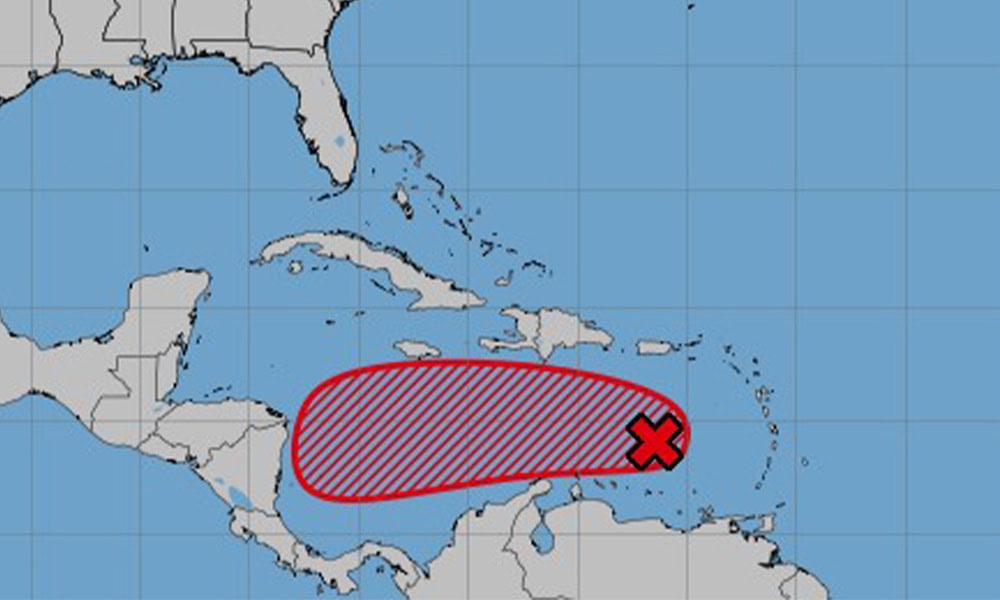Those who live along the Caribbean coast know all too well how quickly weather can turn in October. Right now, the Instituto Meteorológico Nacional (IMN) tracks a tropical wave in the central Caribbean Sea that holds a 70 percent shot at becoming a tropical storm by week’s end. If it does, it earns the name Melissa.
The wave, labeled Onda Tropical #40 by the IMN, sits about 1,000 kilometers east of our shores. It moves west at a slow pace, around 15 to 20 kilometers per hour, and carries showers and gusty winds that already hit the Leeward Islands. Forecasters at the IMN and the U.S. National Hurricane Center agree: conditions look right for growth, with warm waters and low wind shear in play. There’s a 40 percent chance it forms a depression in the next two days, jumping to 70 percent over seven.
For us here, the concern centers on rain. If the system strengthens and drifts closer, it could dump heavy downpours on the Limón area and the northern zones, raising flood risks in rivers like the Sixaola or Pacuare. Past systems in similar spots have brought days of steady rain, saturating soils and prompting slides in hilly areas. The Comisión Nacional de Emergencias (CNE) hasn’t issued alerts yet, but they stand ready, reviewing response plans after recent wet spells.
Models split on the path. Some push it north toward Cuba or the Gulf of Mexico by next week, sparing us the worst. Others keep it lingering in the western Caribbean, which might mean more moisture funneled our way through the Zona de Convergencia Intertropical. Either way, expect increased cloud cover and scattered showers midweek, even if it stays disorganized.
Residents in flood-prone spots should prep now. Clear drains, secure loose items, and stock essentials like flashlights and water. Farmers in the Caribbean lowlands might see impacts on crops if rains intensify. The IMN urges checking their site for hourly updates, as things can shift fast this time of year.
This fits the late-season pattern, with the Atlantic hurricane window open until November. While no immediate threat looms, staying informed keeps everyone safe. We’ll update as the wave evolves.

